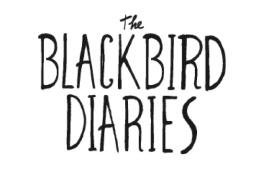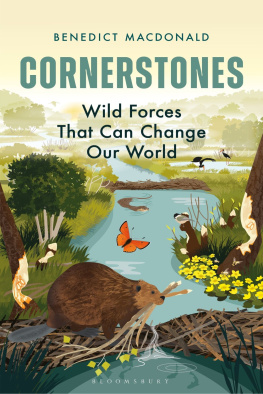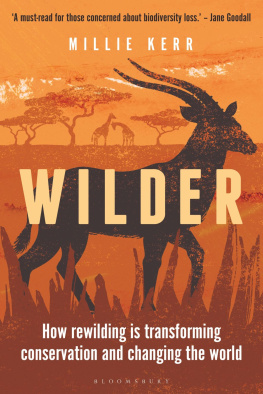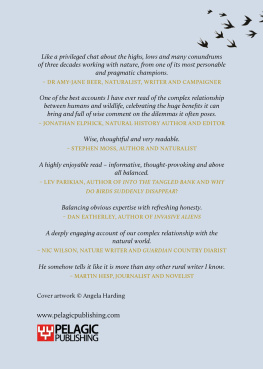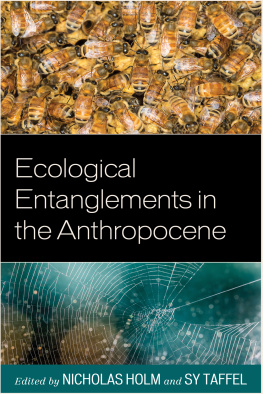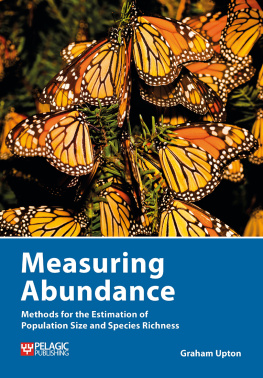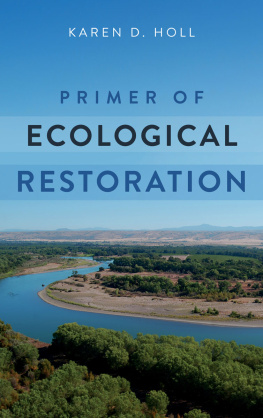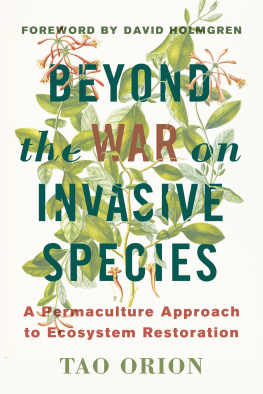
For our sons and daughters, and for theirs.

Contents
A great many people assisted in the process of the writing of this book. First and foremost, I am indebted to the Faculty of Arts and Social Sciences at Lancaster University, whose Literature, Landscape and Environment scholarship enabled me to undertake the journey. Secondly, to Professors Paul Farley and Jenn Ashworth in the Department of English and Creative Writing, without whom I would no doubt still be lost in the forest. The idea for the book followed a conversation with my good friend Astrid Hardwick. Through family connections to the forestry industry in Germany, Astrid had early knowledge of wolves travelling back into countries across Europe from where they had long been absent through changes to legislation. To Astrid and those pioneer wolves, I owe a great deal. To my sister-in-law Cathy Proudlove for introducing me to the work of artist Mary Newcomb. I owe a debt of gratitude to Mark Cocker for introducing me to Extremadura and the Prespa region of Northern Greece and to the many firm friends found in those fields.
In Extremadura, Im grateful to Martin and Claudia Kelsey of Birding Extremadura (RIP lovely dog Moro) and to Christina Gtz. To Karen Izod for inspired company and conversation on our travels. I am deeply indebted to my friend Szabolcs (Szabi) Kkay for setting up research visits and for putting time aside to share the journeys in Hungary with me. (Szabis wonderful paintings of wildlife can be seen at https://kokay.hu/en/paintings/) Im grateful to Lrnt Mikls of Kiskunsg National Parks great bustard project, to Imre Fatr of the Pannon Eagle project, to Tamz and Zita Pchy of the Hungarian Meadow Viper Centre, Tibor Juhsz of the Eagle Centre, Jszberny, the Bird Hospital Foundation, Hortobgy and our genial hosts Judit and Albert at Hajdu Lovasudvar. In Romania, I am deeply indebted to the team at Foundation Conservation Carpathia, to Angela Boghiu and Georgiana Andreea Andrei for arranging our schedule and accommodation. To Mihai Zotta and rangers Bogdan Sulic, Daniel Brloiu and in particular to Liviu Ungureanu for making the forest come so alive to Callum and me, and to Mimi and Gheorghiu Surdu, for such a warm Transylvanian welcome. In the Netherlands I am grateful to Yvonne Kemp of Kennemerland National Park Bison Reintroduction project, Ellen Van Norren and Glenn Lelieveld of the Dutch Mammal Society (Zoogdiervereniging) and wolf volunteers Carolien Koldyk and Jaap van Leeuwen. To all the other wolf volunteers for making me so welcome; oh, how I long to be a wolf volunteer! To Peter Venema of the Province of Drenthe. In Perthshire to Polly Pullar, Linda Cracknell, Duncan Pepper, Paul and Louise Ramsay, Martin Kennedy and special thanks to James Nairne for introducing me to the tribulations of beavers in Scotland and for providing such excellent hospitality. In the Cairngorms, to Tors Hamilton of RSPB and Cairngorms Connect for such illuminating and thoughtful conversations on changing land use and landscape restoration. Thanks to Hamish Napier for permission to quote from his album notes from The Woods suite. Hamishs music can be found at www.hamishnapier.com. To wildlife guide Simon Pawsey and the team at the Grant Arms Hotel, Grantown on Spey. In the Lake District to Anne and Richard Lloyd and Claire and Sam Beaumont at Gowbarrow Hall Farm and to Jim Bliss at Lowther Estates. To Gill Mason for conversations on language acquisition through nature. To Carry Akroyd for permission to quote from her work on John Clare. To Julian Hoffman for details on Prespa. To Ysbrand Brouwers of Artists for Nature Foundation and Manuela Seifert. To Mike Toms at BTO and Kit Jewitt for the excellent fundraising publication Red Sixty Seven , which commission set me off on the quest to find capercaillie. To Nicholas Watts at Vine House Farm. To Peter Corkhill for help with plant ID. To my dear friends Katherine and Nick Gray for conversations about hope in dark times and again to Katherine for accompanying me on my first visit to the Netherlands. Im indebted to my colleague at Lancaster University, Professor Charlie Gere, for permission to quote from his book I Hate the Lake District , and for our ongoing conversations, together with Professor Ian Convery at the University of Cumbria, and Simon Stainer and Karen Slater of Natural England, on the precedents for urgent landscape change and biodiversity restoration in the Lake District. To Roseanne Watt for permission to reproduce her poem flightpaths. To my agent Jenny Brown and Julie Bailey, my editor at Bloomsbury, and the rest of the team; your combined faith in the book is sincerely appreciated. No doubt there are omissions to these acknowledgements for my lack of attention, apologies. Last but not least, to Steve Leach for his unstinting support and for the reading of terrible first drafts. Finally, to our sons, Callum and Fergus, may your way in the world be ever-fascinating, ever-fulfilled.
The future is an infinite succession of presents, and to live now as we think human beings should live, in defiance of all that is bad around us, is itself a marvelous victory.
Howard Zinn
How is it that you live, and what is it you do?
William Wordsworth
A willow warbler flies inside a house by the sea. I dont know why the warbler decided if that is what it did to enter the human-made world. Perhaps its attention had been locked on to a day-flying moth that had, unobserved by me, swithered through the door Id left wide open to let the heat out and the outside in. Or maybe thered been a sparrowhawk locked on to the willow warbler, and maybe the hawk had twisted from the wall of the house at breakneck speed as the willow warbler went where the hawk wasnt able to follow. Perhaps the hawk swivelled back towards the foraging grounds of the oak woods at the back of the house where it was able to pursue other small birds in different, less human-entangled ways.
Im speculating here. Im speculating about the sparrowhawk and whether or not this was the driving force that drove the greenish-yellowish-whitish warbler in through the open door. But theres no speculation about the way the willow warbler sets about doing what every bird that finds itself inserted into the built environment will do in situations like these: the warbler begins to batter itself against the window. And of course, theres no speculation about my attention and the way it has locked on to the battering of the bird and how I want the battering to stop.
Sometimes the warbler (which is similar in size to a blue tit but of slighter build) allows itself to drop onto the white-painted windowsill to rest momentarily. When it does this, I see how the birds breath is the breathing of battering and panic. The warbler is panicked because of its inability to pass through the glass to the outside. It has no ability or perception of how to remove itself from the world of window frames and glass.
By now Im standing to attend to the problem, and I know what needs to be done. But here on the sill, among all the flailing of the greenish wings, and the vibrating of the tiny chest as the birds heart adjusts itself to what panic is, I focus my attention on the subtle green stripe that interrupts the warblers eye the kind of flourish a calligrapher might make with the flick of a brush tip. From there, the green carries on over the head and the wings and over the back of the bird. Above the stripe, theres a yellowish parallel stripe and in the warblers eye a mote of light from the sunshine that floods through the glass. The warblers whitish chest is more difficult to see because the bird is orientated away from me and towards the outside. In glimpses I catch the yellow edge of the underwing, its rim illuminated in the way the early-morning light sometimes catches the contours of the hills on the island across the inlet.


